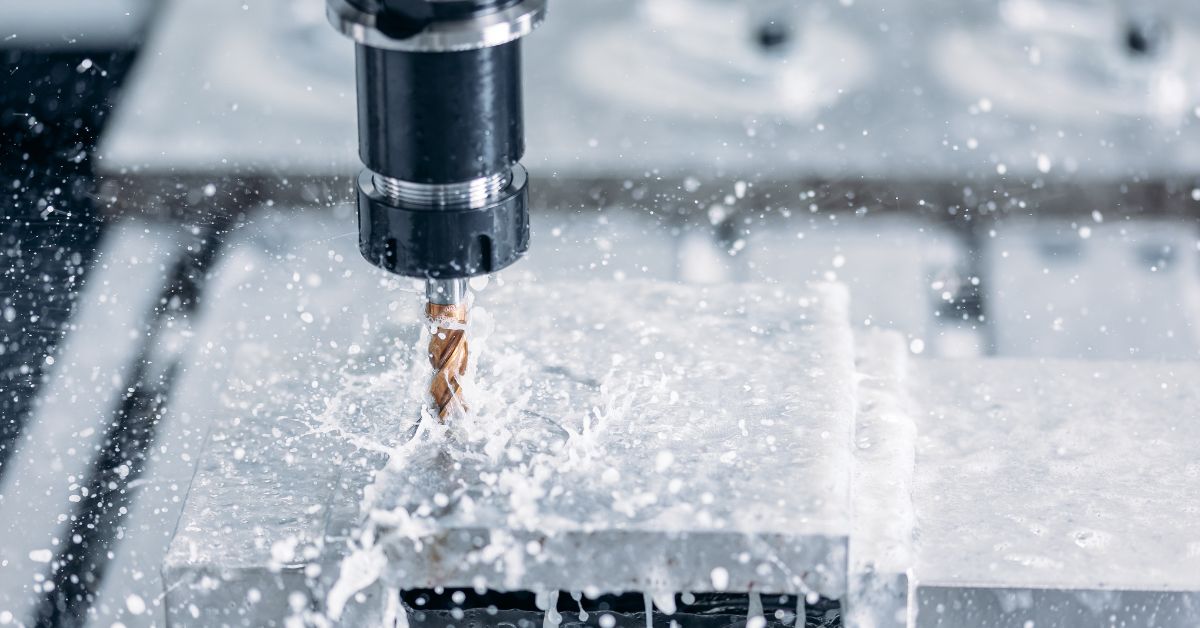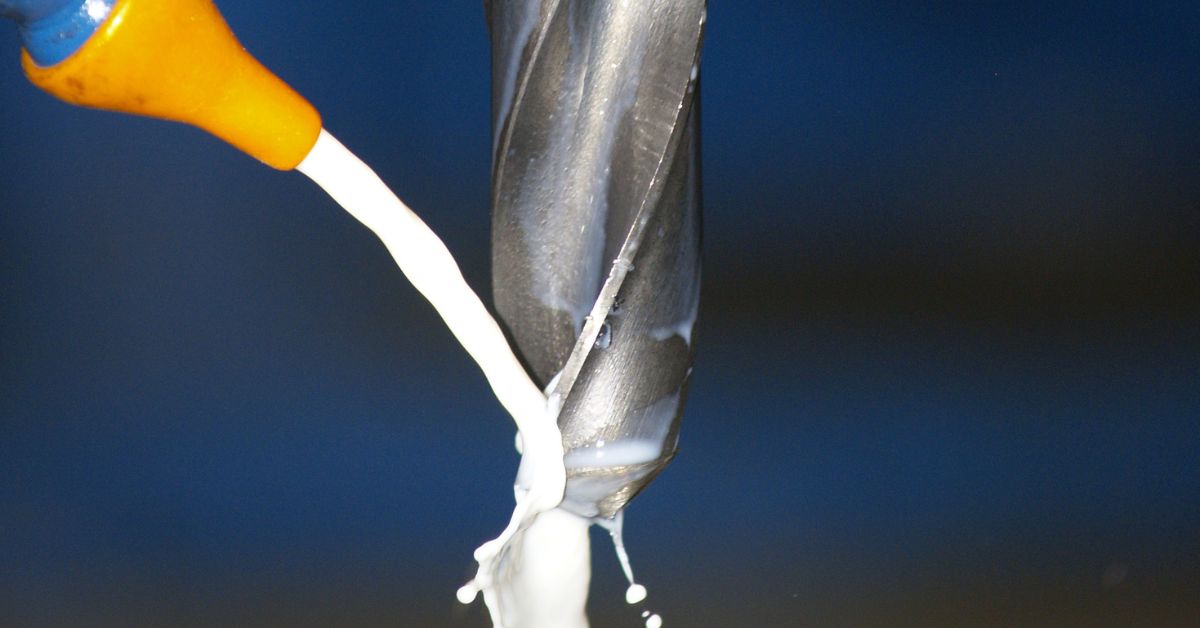When drilling into tough materials like concrete or metal, have you ever thought about what keeps your drill bit working efficiently? One crucial factor often overlooked is the coolant. In this blog post, we will explore the role of coolant in drill bit performance so you understand its function.
We will cover critical aspects such as heat dissipation and the types of coolants used on the job site. When you finish reading, you will have developed valuable insights that enhance your drilling operations.
Understanding the Role of Coolant
Coolant serves multiple functions that improve drill bit performance. At its core, it controls heat generated during drilling. When a drill bit penetrates a material, it creates friction. This friction generates heat, negatively impacting the bit’s integrity and performance.
The Importance of Using Coolant in Drilling
By using coolant, you’re cooling down the drill bit, which prevents overheating. Drill bit overheating accelerates wear and tear, causing drill bits to dull quickly or break. Additionally, coolant aids in chip evacuation. During drilling, tiny bits of material (or chips) are produced. If these chips accumulate, they delay the drilling process and create more heat from additional friction. Coolant keeps these chips away from the drill bit, so drilling is smoother.
Types of Coolants Commonly Used
The construction industry, in particular, uses various coolants, each with specific applications. Construction professionals commonly use water-based, oil-based, and synthetic coolants.
Water-Based Coolants
Water-based coolants are popular because they are easy to find and affordable. These coolants are, as the name implies, mixed with water. They are effective for softer materials such as wood and plastics. However, they may not be as effective when drilling harder materials like concrete or metal.
Oil-Based Coolants
Oil-based coolants, on the other hand, offer superior lubrication properties. They can handle higher temperatures and challenging materials like metals. These coolants create a barrier between the drill bit and the drilled material, reducing friction and wear. However, these are complicated because they’re difficult to clean and have negative environmental impacts.
Synthetic Coolants
For those looking for a more advanced solution, synthetic coolants provide a balanced mix of water- and oil-based properties. They offer excellent cooling and lubrication while minimizing environmental impact. Synthetic coolants are best for high-speed drilling operations where performance is paramount, such as when using asphalt drill bits in demolition tasks that involve concrete work.
Key Factors Influencing Coolant Effectiveness
Various influences affect the quality of a coolant, including the type of drill bit used and drilling speed.
Drilled Material
Water-based coolants may suffice when working with softer materials. However, oil-based or synthetic coolants are essential for tougher materials like metals or concrete. Understanding the composition of the materials you’re drilling will help you determine the appropriate coolant to use for the project.
Drill Bit Type
Each drilling application requires a specific drill bit, influencing the kind of coolant you would use. For example, asphalt drill bits are often recommended for heavy demolition tasks because they can handle tough conditions, especially when paired with the proper coolant.
Drilling Speed
The speed at which you drill also affects the performance of the coolant. Higher speeds generate more heat. Therefore, ensuring that the coolant flow rate matches the drilling speed is crucial. A slow flow could lead to inadequate cooling, while a fast flow may create turbulence that diminishes cooling efficiency.
Best Practices for Coolant Application
Applying coolant correctly is critical to maximizing drill bit performance. Following are some best practices to keep in mind.
Recommended Flow Rates
Maintaining an appropriate flow rate is essential for practical coolant application. A steady flow matching the drilling speed will benefit the most. A flow rate of 1–2 gallons per minute is recommended for most drilling operations, but this can vary based on the type of coolant and material being drilled.
Application Methods
There are several methods to apply coolant, including flood cooling, mist cooling, and through-tool delivery. Flood cooling involves applying coolant directly to the drill site, creating a continuous coolant flow. Mist cooling uses a spray to deliver a fine mist of coolant, which is effective for high-speed applications. Through-tool delivery systems allow coolant to be sent through the drill bit, ensuring the bit stays cool while preventing clogging.
Regular Maintenance
Don’t forget the importance of maintaining your coolant system! Regularly check for clogs or buildup in your coolant lines to ensure consistent flow. Periodically changing the coolant can also help maintain its usefulness, as old coolants can become contaminated and less effective.
The Impact of Coolant on Drill Bit Life Span and Efficiency
Using coolant not only enhances immediate drilling performance but also profoundly impacts the life span of your drill bits. When drill bits operate at cooler temperatures, they experience less wear and tear. This impact translates to longer-lasting bits, which means fewer replacements and lower overall costs for your projects.
Reduced Friction and Heat Management
Coolant reduces friction and improves heat management, allowing you to achieve faster drilling speeds and cleaner holes with less wear and tear on your equipment.
Increased Productivity
When you use a coolant, there is less time spent on each job, which means you can complete more projects in a shorter time. This increased efficiency helps you avoid missing deadlines.
Enhanced Profit Margins
Coolants help enhance your profit margins by improving your efficiency and productivity. With quicker project turnaround times and reduced operational costs, you can see a significant boost in your bottom line.
Maximize Your Operations With Drill Bit Warehouse
Understanding the role of coolant and its application can significantly enhance drilling operations for construction professionals.
At Drill Bit Warehouse, we never recommend anything we wouldn’t buy ourselves. Explore our extensive selection of drill bits and keep in mind the role of coolant in drill bit performance to get the most out of your tools.
So, are you ready to conquer your project’s most difficult heavy-duty tasks? Reach out to us with any questions or for more information on getting the best performance out of your drills.






